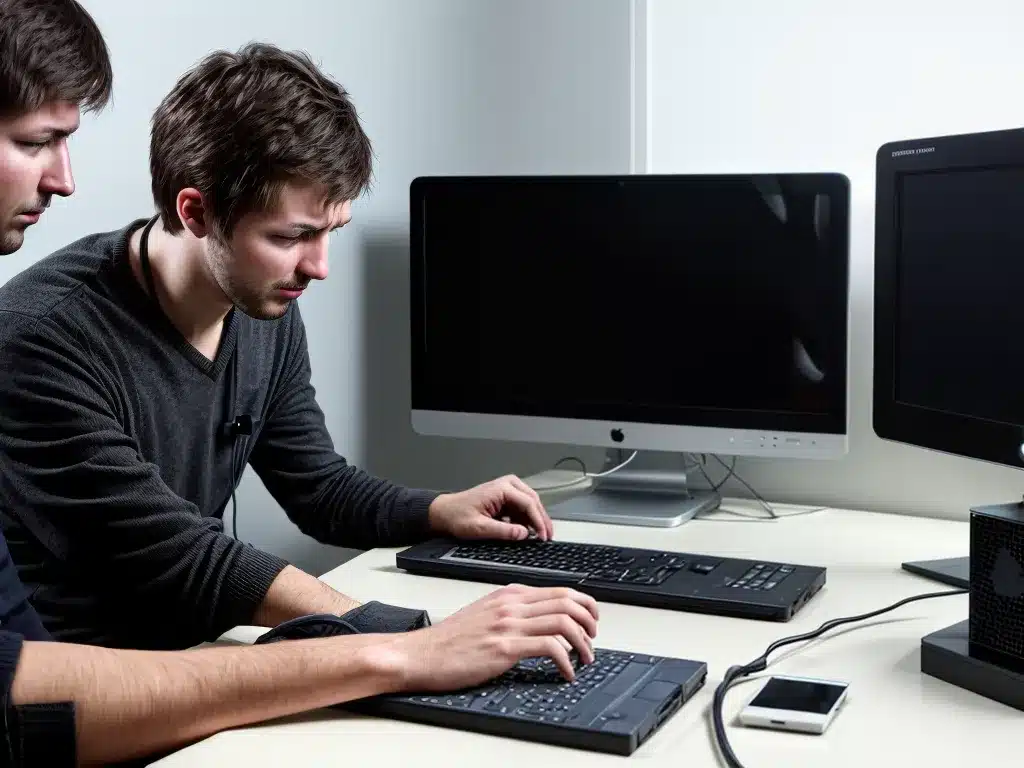
Check if WiFi is Enabled
The first thing I do when my computer won’t connect to WiFi is check if WiFi is enabled. I click on the WiFi icon in the bottom right corner of my screen (on Windows) or top menu bar (on Mac) to open the list of available wireless networks. If I don’t see any networks listed, WiFi is likely disabled.
I then go into my settings to enable WiFi:
-
Windows: Open Settings > Network & Internet > WiFi and toggle WiFi to On.
-
Mac: Open System Preferences > Network and select Wi-Fi in the left sidebar. Make sure the box for Wi-Fi is checked.
Once WiFi is enabled, I check the list of wireless networks again. I should now see my network as well as others nearby.
Forget and Reconnect to Network
If WiFi is enabled but I still can’t connect, I try forgetting my WiFi network and reconnecting from scratch.
Here are the steps:
-
Windows: Go to Settings > Network & Internet > WiFi > Manage known networks. Select my network and click Forget.
-
Mac: Open System Preferences > Network > Wi-Fi > Advanced. Select my network and click the – button to remove it.
After forgetting the network, I reconnect by selecting it from the list of available networks and entering the password when prompted. This often resolves connection issues caused by a corrupted network profile.
Check Router Connection and Placement
I also check that my router is working properly and located in an optimal spot for WiFi signal strength. Here are some things I look for:
-
Power on the router and verify the status lights are normal. If not, unplug and restart it.
-
Move the router to a central location in my home, away from objects that block wireless signals like thick walls, metal appliances, aquariums, etc.
-
Position the router’s antennas vertically to broadcast the signal more efficiently across multiple floors.
-
Update the router firmware to the latest version in case connectivity problems are fixed in software updates.
-
If using an extender or mesh system, optimize its placement to bridge dead zones between the main router and my device’s location.
Switch Wireless Channels on Router
Interference from neighboring WiFi networks can disrupt connectivity on certain channels. I log into my router admin page and switch to a different wireless channel like 1, 6 or 11 until I find one without interference.
Channels 1, 6 and 11 do not overlap with each other so there is less risk of interference. I avoid congested channels like 2, 3, 4, 5, 7, 8, 9 and 10.
Update Network Adapter Drivers
Outdated or corrupt drivers for my computer’s network adapter can prevent stable WiFi connectivity.
To update them I go to:
-
Windows: Open Device Manager > Network adapters. Right click my WiFi adapter > Update driver.
-
Mac: Open System Preferences > Network. Click Advanced and select the correct WiFi adapter. Click Update Driver.
Updating to the latest driver from the manufacturer’s website is best. I restart my computer after installing new drivers.
Reset Network Settings
For connectivity issues that persist even after the usual troubleshooting, I reset my network settings as a last resort.
On Windows 10:
-
Open Settings > Network & Internet > Status > Network reset.
-
Click Reset now and confirm. This will clear WiFi passwords, DNS settings, etc.
On Mac:
-
Open System Preferences > Network > Advanced > TCP/IP.
-
Click Renew DHCP Lease and Apply.
-
Also delete WiFi networks from System Preferences > Network > Wi-Fi > Advanced.
Resetting typically fixes difficult WiFi problems by clearing any problematic custom network settings.
By methodically trying each of these troubleshooting steps, I’m usually able to resolve why my computer won’t connect to WiFi. But if issues persist even after resetting network settings, it’s likely a hardware problem requiring a trip to the repair shop.












